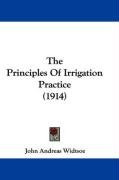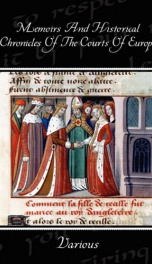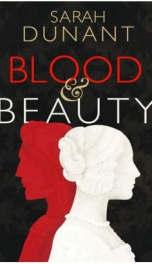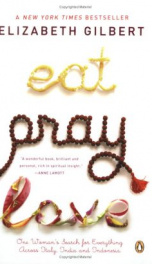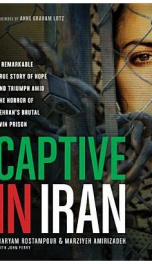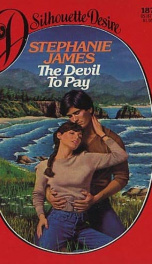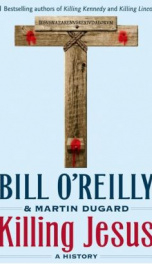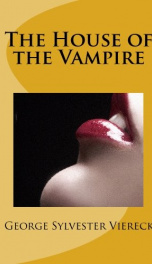Widtsoe John Andreas

John Andreas Widtsoe (pronounced /ˈwɪtsoʊ/, 31 January 1872 – 29 November 1952) was a member of the Quorum of the Twelve Apostles of The Church of Jesus Christ of Latter-day Saints (LDS Church) from 1921 until his death. Widtsoe was also a noted author, scientist, and academician. Widtsoe was born on the island of Frøya in Sør-Trøndelag, Norway. At birth his hand was attached to the side of his head but he survived the operation to fix this problem.[1] When Widtsoe was two his family moved to the Norwegian mainland city of Namsos. His father, also named John, died in February 1878. This left his mother Anna as a widow with two young sons to take care of: Widtsoe, who was then five, and his little brother Osborne Widtsoe.[2] After this the family moved to Trondheim. Here his mother was introduced to the LDS Church by a shoemaker.[3] In 1883, Widtsoe immigrated to the United States with his mother and brother. They made it to Utah Territory in mid-November.[4] Widtsoe was baptized a member of the LDS Church the following April.[5] Widtsoe graduated from Brigham Young College in Logan, Utah. He then attended Harvard University graduating with honors in 1894.[6] He served as the head of the agricultural experiment station at Utah State Agricultural College. He married Leah Dunford, a granddaughter of Brigham Young. She held a degree in home economics and the two of them worked together in extension efforts. He taught farmers better farming skills and she taught their wives how to better utilize what they got from the farm. In 1898, he was ordained to the office of a seventy and set apart to do missionary work in connection with his studies in Europe. He entered the University of Goettingen, Germany, and after applying himself diligently to his studies he graduated from that institution, with the degrees of A. M. Ph.D. in 1899. For part of his time in Europe, Widtsoe lived in Switzerland. The police wanted proof that he and his wife were married, and since they had neglected to bring their wedding license they got married a second time.[7] In August 1900 Widtsoe became the director of the Agricultural Experiment Station at Utah State University.[8] While in this position he founded The Deseret Farmer with Lewis A. Merrill and J. Edward Taylor. Their goal was to have it be a popular magazine that would be read and implemented by the actual farmers.[9] In 1905 Widtsoe was dismissed from the agricultural college as a result of political debates about its future and President William J. Kerr's feeling that Widtsoe was insufficiently supporting him.[10] For a short time he was a professor of agriculture at BYU, and is arguably the founding father of Brigham Young University's college of biology and agriculture. On BYU campus the John A. Widtsoe building is the home of the College of Biology and Agriculture. He later served as president of the University of Utah from 1916 until his call as a member of the Quorum of the Twelve in 1921. Widtsoe was the fifth Commissioner of Church Education from 1921 to 1924 and was the seventh commissioner from 1934 to 1936. During his time as an apostle Widtsoe taught a religion class at the University of Southern California.[11] For two years in the 1920s Widtsoe lived in Washington, D. C. where he supervised the reorganization of the Federal Bureau of Reclamation[12] Widtsoe was closely associated with the Improvement Era even before he became an apostle. Widtsoe was associate editor of the Era from 1935 until 1952[13][14]. While editor of the Era, in the words of Parrish, Widtsoe "directed its growth from a magazine primarily for the youth to the voice of the whole Church".[15] One of Widtsoe's employees while at the Improvement Era was Hugh Nibley, who he convinced to become a professor at Brigham Young University.[16] Widtsoe was also part of the Genealogy committee of the church, being one of the main people behind the implementation of the Temple Index Bureau.[17] In 1923 Widtsoe accompanied Reed Smoot on a journey to Great Britain and the Scandinavian countries, during which they secured recognition and opened the way for missionaries of the church to return to these lands.[18] From 1926 until 1932 he served as president of the European Mission. While in this office, Widtsoe convinced the First Presidency to call a separate president of the British Mission, so that the European Mission president could assume his duties as the supervisor of all the missions in Europe. While president of the European mission, Widtsoe dedicated Czechoslovakia for the preaching of the gospel, and worked closely with Arthur Gaeth in starting the mission there. Widtsoe married Leah Dunford, a daughter of Susa Young Gates, who was a daughter of Brigham Young. Widtsoe worked closely with his wife and mother-in-law in their writing of a biography of Brigham Young. It is this relationship that caused Widtsoe to complete a book on the teachings of Brigham Young. John and Leah also wrote a book entitled "The Word of Wisdom: A Modern Interpretation". This book advocates eating healthy food as part of the Word of Wisdom, although not as a required portion that should be lived in order to get a temple recommend. Besides the Teachings of Brigham Young, Widtsoe was also the lead compiler of Gospel doctrine: selections from the sermons and writings of Joseph F. Smith, sixth president of the Church of Jesus Christ of Latter-day Saints. Widtsoe also wrote A Rational Theology as Taught by the Church of Jesus Christ of Latter-day Saints which has been cited by later LDS authors such as J. Reuben Clark.[19] Another book of Widtsoe's was Evidences and Reconciliations, which was actually a compilation of his Improvement Era writings, which were his answers to the questions on matters of faith he received most often.[20] In this work Widtsoe admits that there are multiple interpretations that Latter-day Saints can hold on issues. One example is his explanation of the creation of the earth: He points out that faithful Latter-day Saints hold the six-day, six-thousand years and undefined-period interpretations of the creation. Although he gives by far the most space to the explanation of the unknown-period interpretation, he does not rigidly contest for any of these interpretations. Widtsoe also wrote Priesthood and Church Government. His work The Message of the Doctrine and Covenants was published after his death, after having been edited by his son-in-law G. Homer Durham. Widtsoe wrote Seven Claims of the Book of Mormon: A Collection of Evidences with Franklin S. Harris, Jr. Widtsoe wrote Joseph Smith: Seeker After Truth Prophet of God. It was published in 1951, and later reprinted by Bookcraft in 1957. It begins with an account of the first vision and goes all the way to Joseph Smith's martyrdom at Carthage.[21] Another work by Widtsoe on Joseph Smith was Joseph Smith as a Scientist: A Contribution to Mormon Philosophy published by the Young Men's Mutual Improvement Association in 1908. In 1944, his essay "The Divine Mission of Joseph Smith" was included in Handbook of the Restoration published by Zion's Printing and Publishing Company in Independence, Missouri.[22] Widtsoe wrote two autobiographies. The first In the Gospel Net largely focused on his mother's conversion to the church. The second In a sunlit Land told the story of his later life, and also included explanations of his educational philosophy. Another book by Widtsoe was Dry-Farming: A System of Agriculture for Countries Under a Low Rainfall (New York: MacMillan Company, 1920). He also served as a co-author of Dodge's Geography of Utah. He wrote numerous works, including a hymn "How Long, O Lord Most Holy and True" which appears as hymn #126 in the current LDS hymnal. Widtsoe died in Salt Lake City, Utah of uremia; he also had prostate cancer for a number of years before his death.[23] Adam S. Bennion was called to the Quorum of the Twelve after Widtsoe's death. J. Smith • Cowdery • Harris • Whitmer • Marsh • Patten • B. Young, Sr. • H.C. Kimball • Hyde • M'Lellin • P.P. Pratt • L.S. Johnson • Wm. Smith • O. Pratt • Boynton • L.E. Johnson • Page • J. Taylor • W. Woodruff • G.A. Smith • W. Richards • Wight • H. Smith • A.M. Lyman • Benson • Rich • L. Snow • E. Snow • F.D. Richards • J.M. Grant • Wells • J.W. Young • G.Q. Cannon • J.A. Young • J.F. Smith, Sr. • B. Young, Jr. • Carrington • Thatcher • F.M. Lyman • J.H. Smith • Teasdale • H.J. Grant • J.W. Taylor • M.W. Merrill • Lund • A.H. Cannon • M.F. Cowley • A.O. Woodruff • Clawson • Smoot • H.M. Smith • G.A. Smith • Penrose • G.F. Richards • Whitney • McKay • Ivins • J.F. Smith, Jr. • Talmage • S.L. Richards • R.R. Lyman • M.J. Ballard • Widtsoe • J.F. Merrill • Callis • Clark • A.A. Hinckley • Bowen • S.Q. Cannon • Lee • S.W. Kimball • Benson • Petersen • M. Cowley • Moyle • Stapley • Romney • L. Richards • Bennion • Evans • Morris • Brown • Hunter • G.B. Hinckley • Tanner • Monson • Dyer • Packer • Ashton • McConkie • Perry • Haight • Faust • Maxwell • Nelson • Oaks • M.R. Ballard • Wirthlin • Scott • Hales • Holland • Eyring • Uchtdorf • Bednar • Cook • Christofferson • Andersen Maeser (1888–1901) • Tanner (1901–1905) • Cummings (1905–1920) • McKay (1920–1921) • Widtsoe (1921–1924) • Merrill (1928–1933) • Widtsoe (1934–1936) • West (1936–1953) • Wilkinson (1953–1970) • Maxwell (1970–1976) • Holland (1976–1980) • Eyring (1980–1986) • Cameron (1986–1989) • Eyring (1992–2004) • Kerr (2004–2008) • Johnson (2008– ) Orson Spencer • David O. Calder • John R. Park • James E. Talmage • Joseph T. Kingsbury • John A. Widtsoe • George Thomas • LeRoy E. Cowles • A. Ray Olpin • James C. Fletcher • Alfred C. Emery • David P. Gardner • Chase N. Peterson • Arthur K. Smith • Bernie Machen • Michael K. Young
do you like this author?
What readers are saying
What do you think? Write your own comment on this book!
write a commentWhat readers are saying
What do you think? Write your own comment on this author!
write a commentBook list

A Rational TheologyAs Taught by the Church of Jesus Christ of Latter-day Saints
Series:
Unknown
Year:
Unknown
Raiting:
3/5
Show more
add to favoritesadd In favorites

Joseph Smith as ScientistA Contribution to Mormon Philosophy
Series:
Unknown
Year:
Unknown
Raiting:
4.5/5
Show more
add to favoritesadd In favorites
Book list

A Rational TheologyAs Taught by the Church of Jesus Christ of Latter-day Saints
Series:
Unknown
Year:
Unknown
Raiting:
3/5
Show more
add to favoritesadd In favorites

Joseph Smith as ScientistA Contribution to Mormon Philosophy
Series:
Unknown
Year:
Unknown
Raiting:
4.5/5
Show more
add to favoritesadd In favorites
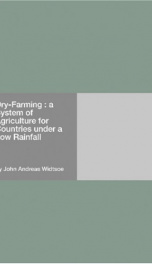
Dry-Farming : a System of Agriculture for Countries under a Low Rainfall
Series:
Unknown
Year:
Unknown
Raiting:
4.5/5
This book was converted from its physical edition to the digital format by a community of volunteers. You may find it for free on the web. Purchase of the Kindle edition includes wireless delivery. --This text refers to the Kindle Edition edition.
Show more
add to favoritesadd In favorites
What readers are saying
What do you think? Write your own comment on this author!
write a commentif you like Widtsoe John Andreas try:
readers also enjoyed
What readers are saying
What do you think? Write your own comment on this author!
write a commentGenre
if you like Widtsoe John Andreas try:
readers also enjoyed
Do you want to exchange books? It’s EASY!
Get registered and find other users who want to give their favourite books to good hands!
